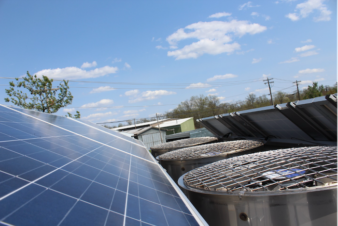Ontario, Calif. — The International Association of Plumbing and Mechanical Officials (IAPMO®) has released the hardcopy and digital versions of its 2015 editions of the Uniform Plumbing Code (UPC®) and Uniform Mechanical Code (UMC®). Both the hardcopy and eBook versions, viewable on computers, tablets and smart phones, can be purchased and downloaded via the IAPMO web store at www.iapmo.org.
In December, the IAPMO Standards Council issued the 2015 editions of these codes, designated as an American National Standard for the fifth time.
IAPMO’s ANSI-accredited process brings together volunteers representing a variety of viewpoints and interests to achieve consensus on mechanical practices. The UPC and UMC are the only plumbing and mechanical codes of practice to be designated American National Standards.
Significant changes to the UPC include:
• New product standards for plumbing fixtures such as lavatories, showers, bathtubs and whirlpool bathtubs, bidets, urinals, drinking fountains, and sinks (Chapter 4)
• Lead-content provisions have been revised to address the minimum acceptable percentage lead content for pipes and fittings (Chapter 6)
• New provisions for residential fire sprinkler systems (Chapter 6)
• New requirements for the insulation of hot water piping (Chapter 6)
• New requirements for medical gas and vacuum systems based on NFPA 99
• New testing and inspection provisions for nonpotable alternate water source systems (Chapter 15)
• New requirements for testing, inspection, and maintenance of nonpotable rainwater catchment systems (Chapter 16)
Significant changes to the UMC include:
• New general requirements for condensate wastes and control, installation of appliances on sloped roofs, and clearances to combustible constructions (Chapter 3)
• New ventilation provisions, such as the classification of recirculated and transferred air, parking garages exhaust, and natural ventilation (Chapter 4)
• New exhaust provisions for clothes dryers, Type I hoods and grease ducts, dishwashing machines, and downdraft appliances (Chapter 5)
• New duct systems requirements for factory-made air ducts, plastic ducts, and for ducts used in underground installations (Chapter 6)
• New appliances provisions, such as electric duct heaters, electric ranges, refrigeration appliances, and ductless mini-split systems (Chapter 9)
• New refrigeration system requirements, such as the refrigeration concentration limit, ventilation for refrigeration machinery rooms, pressure vessels, and pressure relief valve discharge (Chapter 11)
• New hydronic systems provisions (Chapter 12)
Introduced in Los Angeles in 1928 and formally published as the Uniform Plumbing Code in 1945, the UPC is developed to govern the installation and inspection of plumbing systems as a means of promoting the public’s health, safety and welfare. Later published by IAPMO in 1967, the UMC provides the same governance for mechanical (HVAC, combustion, exhaust, refrigeration) systems. Developed and subsequently republished at the conclusion of each three-year code cycle, the UPC and UMC are designed to provide consumers with safe plumbing, heating and mechanical systems while, at the same time, allowing latitude for innovation and new technologies.
The public at large is encouraged and invited to participate in IAPMO’s open consensus code development process. A code development timeline and other relevant information are available at IAPMO’s website, www.iapmo.org.




Join the conversation: